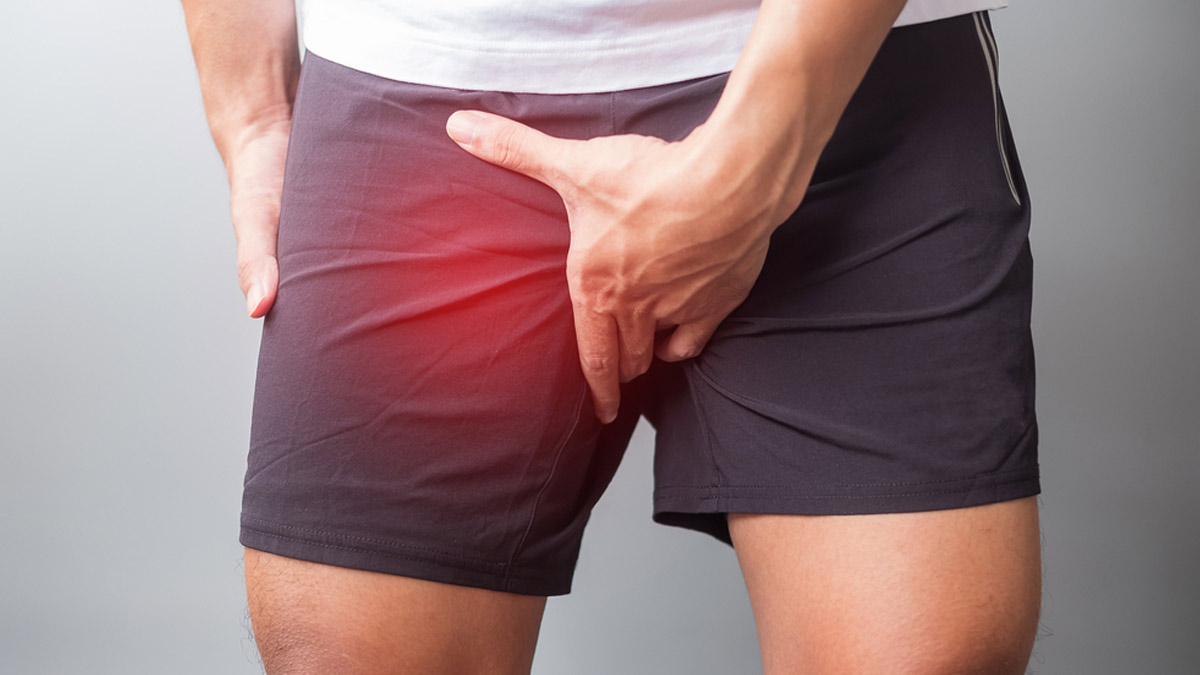
You've probably heard about the groin area, especially from those who are into sports or are athletes. But do you know what it exactly is and where it is located?
The groin is the area where the upper thigh meets the lower abdomen. It's a fold or crease on either side of the pubic bone and consists of structures like blood vessels, nerves, lymph nodes, and muscles. This is why the groin is also an injury-prone area, and many people experience pain due to various reasons.
Table of Content:-
In this article, we discuss the common causes of groin pain while walking and how it can be managed.
Also Read: How To Lose Weight Around The Groin?
Possible Causes

Groin pain can occur in both males and females. It's a widespread issue and can arise from various causes.
Dr Akhilesh Yadav, Associate Director-Orthopaedics and Joint Replacement, Max Hospital, Vaishali, says, "Numerous diseases, such as muscle strains, ligament sprains, hernias, hip joint issues, or underlying medical conditions like bursitis or arthritis, can result in groin pain during walking.
Common causes of muscle strains and ligament sprains include overuse, abrupt movements, and insufficient warm-up prior to physical activity, he adds.
In addition, hernias, like inguinal hernias, hurt in the groin area when a portion of the intestine or other tissues protrude through a weak place in the abdominal wall.
Moreover, groin pain during movement can also be brought on by issues with the hip joints, such as hip osteoarthritis or labral tears.
In women specifically, groin pain can be a result of an ovarian cyst, with a higher prevalence in premenopausal females, according to the Office on Women's Health.
In men, conditions such as epididymitis and orchitis, which refer to the inflammation of the epididymis and testicles, respectively, can lead to severe groin pain.
How To Diagnose Underlying Causes
As per Dr Yadav, a combination of physical examination, diagnostic testing, and a review of medical history is usually used to identify the underlying reasons for groin pain.
Palpating the groin area to check for soreness, oedema, or anomalies is part of a comprehensive physical examination. In order to assess the hip joint's stability and range of motion, the healthcare professional may also carry out particular movements.
“To determine the precise source of groin pain, diagnostic testing could be prescribed. To assess the bones, muscles, and soft tissues in the groin and hip region, doctors may recommend imaging techniques like X-rays, Magnetic Resonance Imaging (MRI) scans, or ultrasounds,” the doctor says, adding that blood tests may also be performed to look for indications of infection or inflammation and to rule out any underlying medical disorders that may be causing the discomfort.
Also Read: Feeling Pain On The Right Side Of Abdomen? This May Indicate Following Condition
When Is Groin Pain Concerning?

If your groin pain is severe, ongoing, or getting worse over time, it is advised to consult a healthcare professional.
If the pain is accompanied by additional symptoms like fever, redness, swelling, trouble walking or bearing weight, or changes in the bowel or bladder, these could point to a more serious underlying problem that needs to be treated right away, says Dr Yadav.
Certain red flags may also warrant immediate evaluation. These include:
- Sudden onset of severe pain
- Inability to move the leg or hip
- Signs of a possible hernia, such as a bulge in the groin area that cannot be pushed back in
“Groin pain that occurs following a traumatic injury, such as a fall or sports-related accident, should also be assessed promptly to rule out fractures or other serious injuries,” the doctor further recommends.
Management Of Groin Pain And The Role Of Exercise

Depending on the underlying cause, groin pain can be managed through different strategies, including rest, ice or heat therapy, Over-The-Counter (OTC) pain medications, physical therapy, and, in some cases, surgical intervention.
While exercising during this time can be painful and discomforting, it can be beneficial as part of a comprehensive treatment plan for certain causes of groin pain, such as muscle strains or hip joint problems, says Dr Yadav.
He adds, “Exercises that may help improve strength, flexibility, and stability in the groin and hip area include stretching, strengthening exercises targeting the muscles around the hip joint, and low-impact activities, such as swimming or cycling.”
However, the doctor recommends avoiding activities that exacerbate pain or discomfort and progressing gradually with exercise to prevent further injury.
Conclusion
Groin pain can be distressing, especially when it affects your movement. Many factors, such as muscle strain, hip joint issues, hernias, and chronic conditions like arthritis, can lead to pain in the groin. Soreness in the area should be addressed as soon as possible to receive appropriate treatment, depending on the underlying cause. Consult a healthcare professional to receive a proper diagnosis and timely treatment.
Also watch this video
How we keep this article up to date:
We work with experts and keep a close eye on the latest in health and wellness. Whenever there is a new research or helpful information, we update our articles with accurate and useful advice.
Current Version